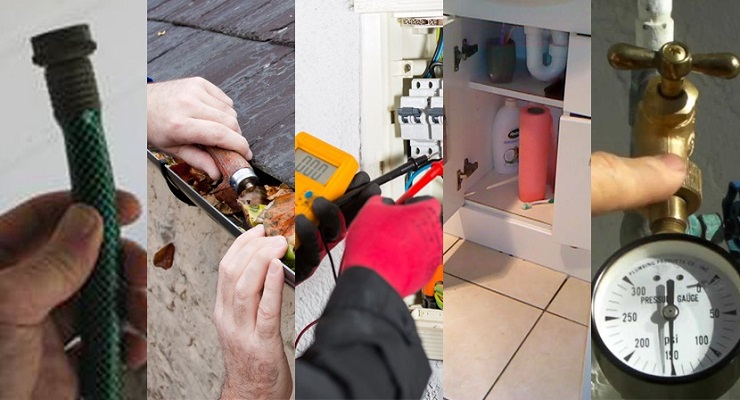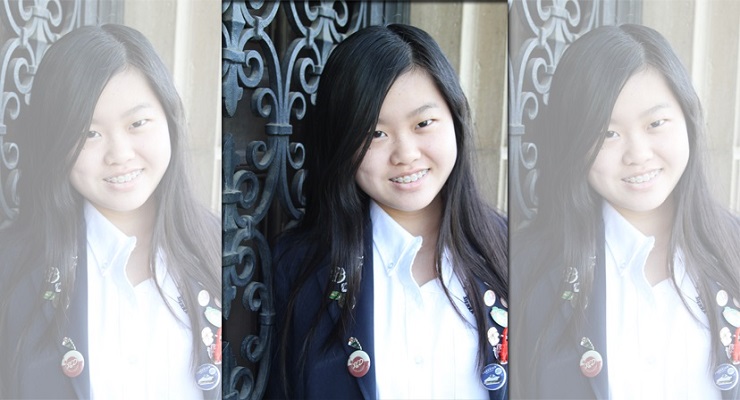On Monday, March 13 Alverno Heights Academy’s Honors Physics class, as well as a handful of other students, had the opportunity to meet and hear from Susan G. Finley, the longest-serving woman in NASA. Finley has been an employee at JPL since 1958. Somewhat of a recent local celebrity, Finley’s notoriety has risen thanks to Nathalia Holt’s book, Rise of the Rocket Girls: The Women Who Propelled Us.
During her visit on Monday, Finley shared more of her story with the girls, allowing them to ask questions and interjecting with other stories and anecdotes as she thought of them. Finley attended Scripps College for three years with the original intention of becoming an architect. Her knowledge of engineering was vast because of her talents in mathematical and computing courses, so she attempted to learn art, but later realized that engineering was in her future. During her college experience she majored in the humanities, which she explained to the girls allowed her to see the connectivity with everything in our world. At the age of 21, she left Scripps College to become an engineer with a thermodynamics group at Convair in Pomona.
Like most women of her generation, Finley took time off at the beginning of her career to raise a family. She left JPL twice in the first few years of her employment in order to support her husband’s education and also took maternity leave for some time for her two sons, returning permanently to JPL in 1969. According to Finley, balancing her work and family lives was difficult because of the “lack of good child care options” and commented that both JPL and Caltech today offer excellent childcare options that weren’t available at that time. When asked by one of the girls, Finley commented that she believes that women still face these struggles today and many others, especially in the STEM fields. One of her goals was to keep her work and home life separate, aiming to never bring her work home with her or “working late without making up that time at home.” She cooked all the meals for her family, but did not spend much time on housework. In fact, Finley explained to the class that her “lack of talent in housekeeping” was one of the reasons that she returned to work after her children were old enough.
In 1958, she took a position at JPL. This job required her to perform “trajectory computations for rocket launches by hand.” In 1962, it was a calculation Finley made that showed that Ranger 3 had missed the Moon by 22,000 miles.
The advent of electronic computers slowly changed what the all-female computations group did. The women were trained to program in FORTRAN, the primary computer language developed for scientific applications. Male engineers largely didn’t want to do the programming themselves in the 1960s. It was still considered “women’s work,” not part of an engineer’s job description. Through her career, Finley provided both manual computation work and FORTRAN programs as part of JPL’s missions to the Moon, Mars, Venus, Mercury, Jupiter, Saturn, Uranus and Neptune, in the Ranger, Mariner, Pioneer, Viking, and Voyager programs
In the 1990s and 2000s, Finley contributed to JPL’s further explorations of the solar system. She worked with the Mars Exploration Rover missions and developed technology in which musical tones were sent at differing phases of descent and were transmitted back to DSN. The engineers were then able to use this information to determine which landing stage the rocket was in at a given time. Finley was stationed at the Goldstone and Tidninbilla stations while the landings were taking place and was the first to hear the tones that confirmed the landers survived their trip to Mars. Unfortunately, her work went unrecognized in the media because they reported from JPL’s mission control only.
She continues to work full-time for JPL and is involved in DSN support for NASA’s recent unmanned missions, including the recent Pluto flyby by the New Horizons spacecraft and the Juno mission to Jupiter. She told the class that she has absolutely no plans to retire and looks forward to seeing where space exploration continues to take us.
Following the question and answer session, the students gifted Finley with some fun Alverno gear for her to sport around JPL, as well as some space-themed cupcakes they had baked. She also generously signed autographs and answered personal questions from the girls.
“It was an incredible pleasure to welcome Sue Finley to campus,” said Alverno Heights Academy Science Teacher Ms. Monica Barsever. “She is truly a role model for young women looking to enter the STEM fields and the impact she has made on the history of the space program is tremendous. We want to thank her for coming and sharing her inspiring story with us.”
About Alverno Heights Academy
Alverno Heights Academy is an all-girls, independent, progressive Catholic, college preparatory school dedicated to its mission of empowering each young woman to be exactly the person she wants to be. Located on the property of the former Barlow Estate in Sierra Madre, California, Alverno Heights Academy was founded in 1960 by the Sisters of St. Francis who sought to create an environment in the San Gabriel Valley where young women could become informed and knowledgeable persons. Later renamed Alverno High School and sponsored by the Immaculate Heart Community, Alverno’s program—academic, spiritual, aesthetic, social, and physical—has been shaped by the staff, trustees, and students. As Alverno Heights Academy once again, the school remains committed to its mission by encouraging each of their young women to be who they imagine. For more information about Alverno Heights Academy, please visit www.alvernoheightsacademy.org.
















